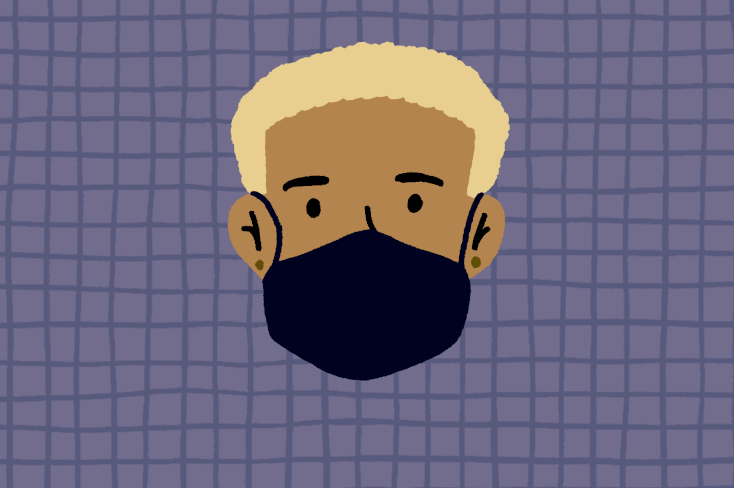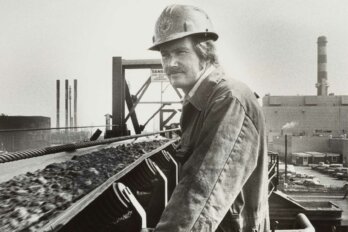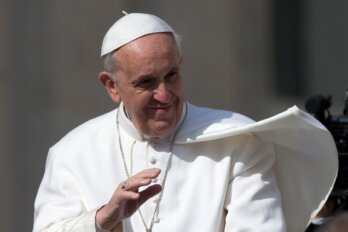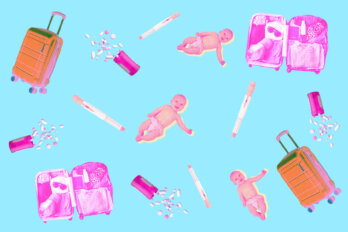I didn’t expect to become a bearded man. In my early twenties, facial hair was a long way from being a core aspect of my identity. I fell in with a group of slightly older students at my university and, equipped as I was with a baby face a toddler would envy, quickly became the butt of every age joke you could imagine.
After school, as I kicked off my career, I began to embrace my baby face because I was proud to have achieved the things I had in spite of my age. I flirted once or twice with the idea of facial hair, but the patchy blond stubble I could manage back then looked ridiculous against my dark-brown hair. My partner shut things down pretty quickly, and on some level, I was thankful for it.
But, in 2020, prompted by the first COVID-19 lockdown, I had a change of heart. With nowhere to go and no one other than my partner to see, I could weather those first few awkward, itchy weeks of beard growth in the comfort of my own home and then emerge from my pandemic chrysalis a fully bearded butterfly. Now, with a full beard, longer lines in my forehead, and deeper bags under my eyes, I am no longer an apparent youngster who still gets carded on every trip to the liquor store. I finally look like a man in my late twenties (though the fact that I dress like a millennial dad and have more or less given up on skinny jeans probably helps). Every time I see an old picture of myself without facial hair, I cringe. In two years, my beard has become an unexpected but intractable part of my identity. And I’m not alone.
By April 2020, “pandemic beard” went from a joke on social media to a somewhat unexpected reality. The New Yorker declared that quarantine beards were on the rise, and a Boston Globe headline later proclaimed that it’s a “hairier, scarier world.” One concerned spouse even wrote to the Washington Post to confess how much they hated their husband’s newly grown facial hair and ask for advice. After close to a decade of facial hair’s rising presence in North American fashion, pandemic beards were almost perfectly positioned to grace clean-shaven faces everywhere.
But that’s also when the confusion started. In an early 2020 CBC roundup of audience questions, readers asked, “How long does COVID-19 stay active on a beard?” And, a few months earlier, a 2017 chart from the CDC, which made recommendations on how to best wear tight respirators with facial hair, began circulating on social media. The bottom line? Don’t—unless you plan on sporting one of the few styles that can be tucked beneath a mask, including moustaches of varying widths, like the chevron or the walrus, and smaller patches on the chin, like the soul patch. I vividly remember a friend with a massive, aspirational beard sharing the chart on social media with the caption, “Yea, I’d rather die.”
Online fact checkers were quick to point out that the chart was not a CDC recommendation for COVID-19-era mask protocols. As health officials debated whether we needed to be wearing masks at all, a lot of folks were unclear on the safest ways to navigate this deeply misunderstood moment in history. In April, the New York Times advised that it might be time to shave your pandemic beard altogether.
The reality for most men was different. We bought cloth masks, found beard oils we could tolerate smelling underneath them, and embraced our newly hairy faces. Now, as the pandemic trudges on, some men have returned to their pre-COVID-19 looks while others (including myself) have embraced our new ones. For centuries, facial hair fashion has shifted with the times. After some of the most disruptive years in modern history, is the COVID-19 beard just a fad, or is it here to stay?
Beards have been a central aspect of the male aesthetic for hundreds of years. In the 1600s, Europeans believed that they were a symbol of male virility, “like an emblem of a man,” says Alun Withey, a senior lecturer at the University of Exeter. Withey studied beards extensively in the UK and Europe and, in 2021, published a book chronicling British facial hair from 1650 to 1900. In the past, he adds, a man unable to grow a beard could have been seen as suspiciously unmasculine.
From the 1700s until around 1850, beards fell out of fashion due to myriad changing social values. Clean-shaven jawlines became associated with the faces of polite gentlemen. The Victorian period was the opposite. This was thanks in part to freezing winters during the Crimean War, which made it nearly impossible for soldiers to shave, which in turn sparked a widespread fashion trend upon those soldiers’ return. Civilians across Britain aspired to increasingly wide whiskers to match the heroic veterans. The history of beards, Withey says, has often come in waves, but their presence or absence has usually been reflective of a certain moment in time.
When razors first became available to consumers, around 1750, beards—or the lack thereof—morphed into a status symbol. Since buying a razor could be very expensive, many turned to barbers, where a shave and a haircut could cost as little as a penny. Even at that low price, Withey says, less affluent men could often afford only one shave a week—usually before church. It wasn’t until the early 1900s, when the safety razor with a replaceable blade (invented by the founder the American Safety Razor Company, later renamed Gillette) hit the market, that men could easily attain a clean-shaven face at home—a look that remained popular throughout the next century.
By the time millennials like me were growing up, facial hair was somewhat out of vogue. Movie stars, news announcers, and white-collar workers who wanted to appear “professional” sported clean-shaven faces, and the idea that facial hair represented laziness and a lack of personal responsibility was everywhere. When, as a teenager in the late aughts, I applied for my first part-time jobs, employers told me that they were happy to see a “nice, clean-shaven young man.” I didn’t have facial hair or tattoos, so they thought they could count on me to be responsible.
But, in the 2010s, all of that started to change. Hipsters pulled on old cardigans and suspenders and sprouted increasingly elaborate beards and waxed moustaches to complement the look. As the generation that had been lectured to distrust men who weren’t “nice and clean shaven” gradually aged into the work force, the taboo around beards began to fade.
So it’s perhaps easy to understand why so many men were eager to grow out their facial hair during the pandemic. It might have been partly about taking control of one’s own body at a time when the world was very much out of control. But it was also simply fashionable. Now, as the pandemic drags on, will the look persist into the 2020s? Withey thinks it might. “It’s become naturalized,” he says. “It’s no longer a discussion point. You grow a beard or you don’t grow a beard.”
“And I wonder if it links into the greater acceptance that we have now of difference,” he adds. “I think, for the Victorians, the idea that there could be more than two genders would be completely alien. But now we accept that gender is very fluid.”
I spent much of last year reconnecting with family and friends only to be asked, “What happened to your face?” But, by now, I’m used to the beard. When I picture myself, I’m bearded. For me, it’s not about masculinity or some larger commentary on this moment in history—I just think I look better with facial hair.
It has been an unpredictable decade. We’re all living through some of the least certain times in recent memory. History has a tendency to tie itself to fashion, and there’s no question that these years have been historic. Somewhere down the line, when we’re looking back on the distant, devastating age of the pandemic, COVID-19 may well evoke the smell of beard oil trapped beneath a stuffy N95. I might remember the condensation from my mask freezing unexpectedly to my face during my first pandemic winter.
Pandemic beards are certainly a lighter side of COVID-19 and nowhere near as important as so many other effects the pandemic has had on the world. But they are also, for better or worse, part of this decade’s look. And, someday, they will be a part of history too.





